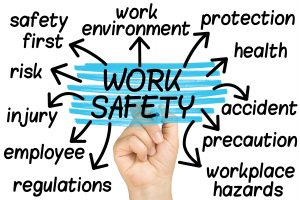
Racking inspection by a SEMA Approved Racking Inspectors guidelines are simple, but they are still not understood by everyone.
Starting a new business is hard. To go from that initial rush of excitement on an idle Monday morning when your idea first struck you — and you scribbled it on the nearest scrap of paper you could find — to a venture which actually creates enough profit for you to live comfortably is a long and difficult journey.
As such, it’s hardly surprising that not every business person knows the ins and outs of every guideline they need to follow. Along with everything else a first-time entrepreneur needs to learn, Racking inspection by a SEMA Approved Racking Inspectors guidelines can sometimes take a back seat. They shouldn’t, of course, because following them is the best way of making sure that you are following the law.
Inspections from SARIs (SEMA approved racking inspectors) are recommended by both racking inspection guideline by a SEMA Approved Racking Inspectors and HSE’s HSG76. SARIs are expert rack safety inspectors with a background in engineering, who have attended SEMA’s intensive SEMA approved inspectors qualification course. SARIs also need to attend regular top-up seminars and courses to make sure that their knowledge is cutting edge.
Because the demands of being a SARI are so high, there are only 100 of them working in the UK as of March 2018. The high standard of the SEMA-approved inspector’s course and the SARIs it produces is why both SEMA and HSE recommend inspections from them.
But, how often do these inspections need to be?
How Often Should a SARI Visit According to Racking Inspection Guidelines by a SEMA Approved Racking Inspectors?
At least once every 12 months. There are other factors which will mean you will need more regular inspections, but racking inspections guidelines require that you have an inspection from a SARI at least once every 12 months.
Side Note: Racking Inspection Guidelines Are Not the Law
Racking Inspection Guidelines by a SEMA Approved Racking Inspectors often come in the form of Codes of Practice. While these have helped to inspire HSE regulations, EU Standards and some pieces of UK legislation, they are not the law in and of themselves.
Rather, in HSG76, HSE often refers to racking inspection guidelines by a SEMA approved racking inspectors as examples of best practice. So, while racking inspection guidelines by a SEMA approved racking inspectors have the official backing of the UK government, that’s not the same as the law. In HSE’s own words, people are “free to take other action”. Racking Inspection Guidelines by a SEMA Approved Racking Inspectors are the best way of doing things, but they are not the only way.
A key example of this is with how often a SARI should visit. HSE recommends an “expert” inspection once every 12 months and it says that SARIs are expert inspectors. However, you are “free to take other action”.
Should a SARI Visit More Than Once Every 12 Months?
According to both Racking Inspection Guidelines by a SEMA Approved Racking Inspectors and HSE guidelines, there are instances when a SARI should visit more than once in a 12-month period. According to the Provision and Use of Working Equipment Regulations (PUWER) 1998, if work equipment has been damaged, moved, recently installed, recently reinstalled, or if anything has happened to it which might affect its performance, it needs to be inspected.
Racking systems count as work equipment. So, in order to follow PUWER 1998 and Racking Inspection Guidelines by a SEMA Approved Racking Inspectors, you should book an immediate inspection from a SARI if your racking has been damaged, moved, recently installed, recently reinstalled, or if anything has happened to it which might affect its performance. If in doubt, the best thing to do is to talk to a SARI to see if you should book an inspection.
To talk the SARI at Storage Equipment Experts, contact us today. We offer a FREE consultation and can tell you in a matter of minutes whether or not your racking system needs a SEMA-approved racking Inspectors.





